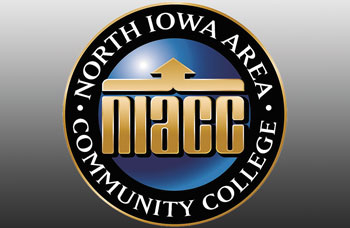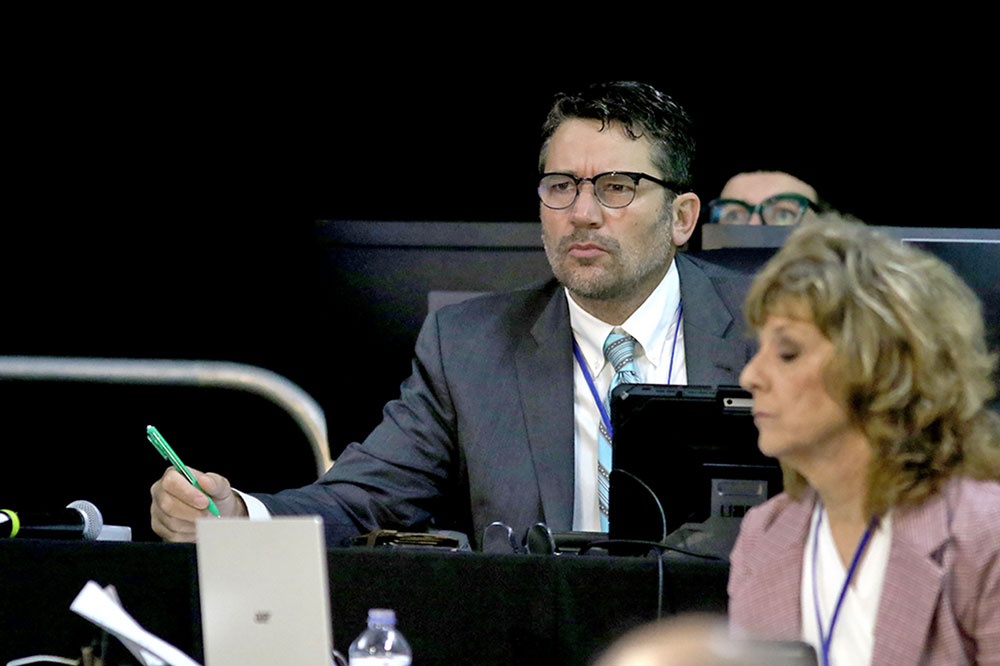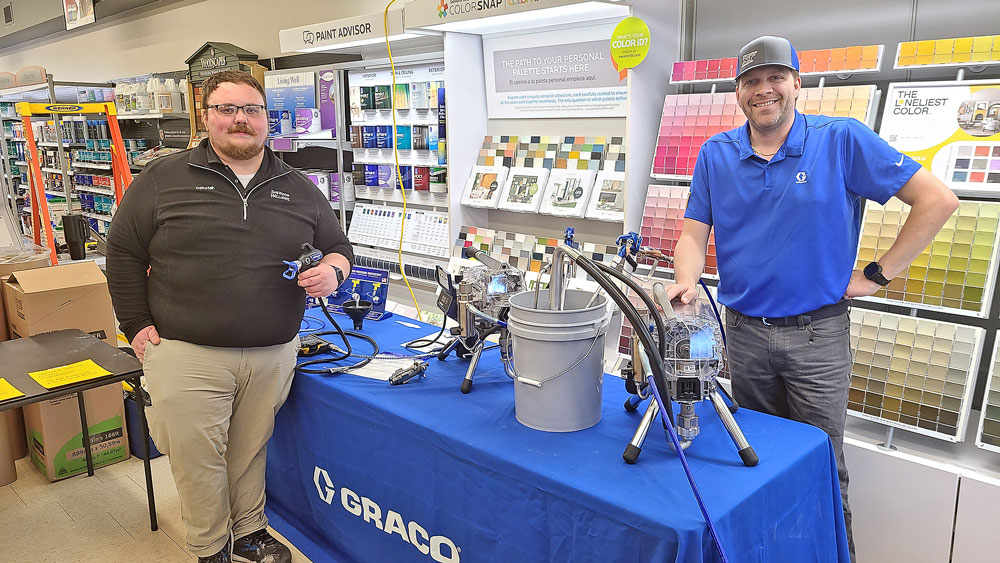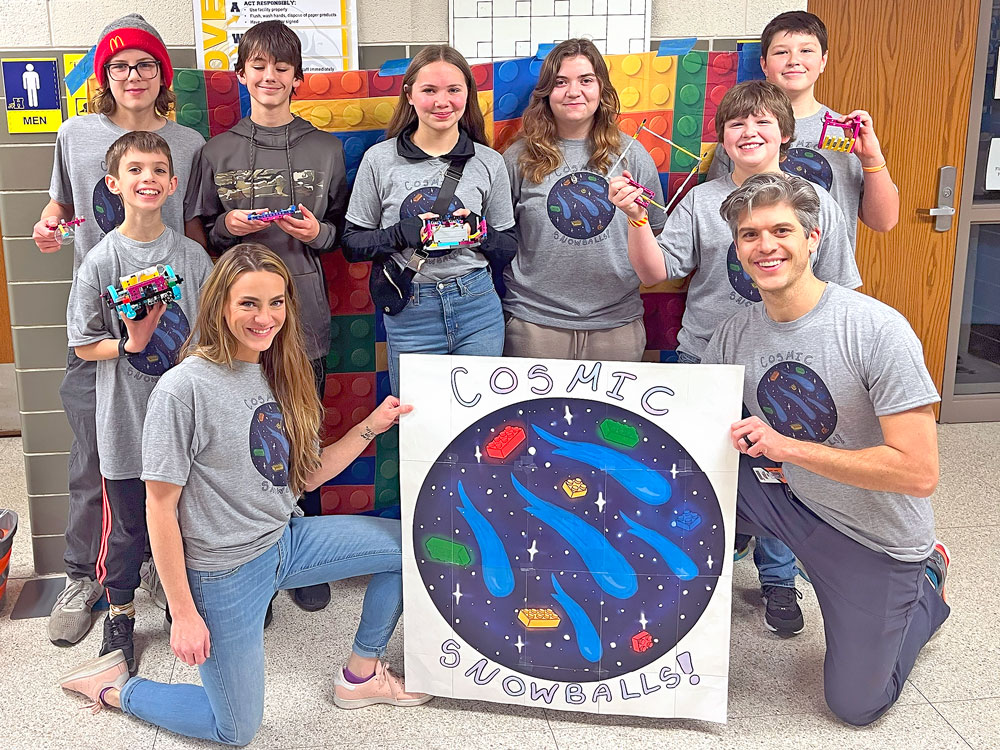FISCHER: What happened to ’It’s nice to share?’
By Travis Fischer, tkfischer@charlescitypress.com
Well, it finally happened.
After months of sliding under the radar, I finally got caught up in the Netflix crackdown on account sharing. Or, more accurately, my mom did.

It was only a couple months ago that I did a rundown on how much the various streaming services me and my family use were costing us across our households and already I’m having to look again to see if what we’re getting is worth the expense.
At $16 a month, Netflix was already the most expensive streaming service I use by a pretty wide margin, but I could justify it due to how much “Grey’s Anatomy” my mother would binge watch. Now though, it’s costing me an extra $8 a month to keep her on my plan. Going into 2024, I’m now paying three times what I paid for Netflix a decade ago.
Don’t get me wrong, I like Netflix. They still have a lot of must-see programming and I want to support them. But this is getting to be unsustainable.
At the very least, I may have to consider telling my mom she needs to utilize one of my other services she has an account on for a while and demote Netflix to a service that I pause and reactivate every few months. It’s annoying, but the inconvenience may be worth it.
Of course, the problem is what other services can my mom use in the meantime? Disney has announced plans to follow suit on account sharing next month as well, which will take Hulu and Disney+ off the table. Who else is next?
In the land of capitalistic make-believe, the hand of the free market would inspire competing streaming services to go against the trend and offer more flexible policies to attract more customers. I subscribe to nine different streaming services right now. Nobody likes account sharing crackdowns, so surely one of them will take advantage of this opportunity to make their service look more appealing than their competitors, right?
No, of course not. This is reality, not the land of capitalistic make-believe. There are only two kinds of streaming services. Those that have cracked down on account sharing, and those that haven’t yet cracked down on account sharing.
The fact is that this was always inevitable. We’ve been living the good life for a long time. Big media has been pumping billions of dollars into streaming services, running them at a loss for years. Disney+ launched in 2019 and isn’t expected to turn a profit until the end of this year. Paramount+ only lost $238 million last year, which was an improvement from the $343 million they lost 2022.
Running at a deficit to build a customer base and raising prices to turn a profit later was always the plan. Everybody should understand that.
It doesn’t take the sting out of it though.
To make matters worse, along with cracking down on cost saving measures like account sharing, it’s getting more and more expensive to enjoy an ad-free streaming experience.
Amazon, in their ongoing quest to see how much lower they can drive down the value proposition of Amazon Prime, has introduced ad-breaks to their selection of movies and TV shows. Now if you want an ad-free Prime Video service, it will cost you an extra three bucks a month.
Announcing this change on their website, Amazon even has the audacity to suggest that paying the extra for the premium experience is inevitable, giving you the options of either “Go ad free” or “Not now” on the notification box. For some reason “I will cancel my Amazon Prime before I pay an extra $3 to watch Invincible without ads” is not a button I can press.
Meanwhile, YouTube Premium’s price hike has finally caught up to me. The ad-free YouTube experience bumped its monthly price up to $14 quite some time ago, but I continued to get billed $10 until last month.
Nothing good lasts forever I suppose.
Now look, I appreciate the fact that advertisement revenue makes the world go around. After all, ad revenue pays my salary.
Again, we’ve been living the good life for a long time and it’s real hard to go back. When the great streaming experiment started, ad-free viewing was part of the selling point. We may have hoped that the industry would have figured out a way to offer streaming content at a profit for a reasonable price without resorting to ads as a revenue source, and I’m sure many people spent a lot of time trying to figure out how to make that work.
But it didn’t. At the end of the day the money has to come from somewhere and if it’s not ad revenue then it’s subscription prices.
There’s no way around it. The only thing left to do is cut back all together.
— Travis Fischer is a news writer for the Charles City Press and may need to show his mom out to use free services like Crackle or Tubi.








Social Share